Ravenna makes Giacomo Boncompagni a citizen and Senator
One of the new archival finds from the Villa Aurora is a magnificently executed declaration of 7 August 1581. It records that Ravenna has granted to Giacomo Boncompagni (1548-1612, son of Pope Gregory XIII) citizenship and a place in its Senate.
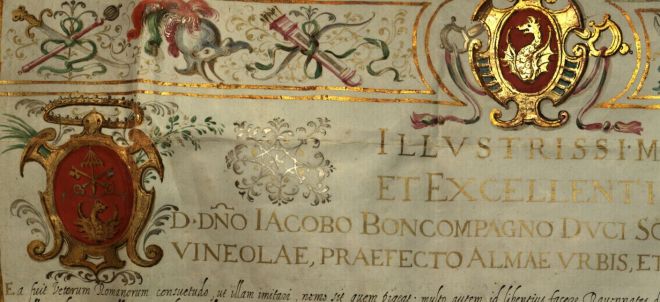
Collection of HSH Prince Nicolò and HSH Princess Rita Boncompagni Ludovisi, Rome (this and all MS photos below).
The grant is otherwise attested by a document in the Biblioteca Comunale di Bologna (lvi, Cancelleria 34, e. 136 v.°). Giacomo followed up this grant with a grand ceremonial entrance into Ravenna on 7 December 1581.
In 1576 Giacomo Boncompagni married Costanza Sforza (1550-1617), direct granddaughter of Costanza Farnese (daughter of Alessandro Farnese, later Pope Paul III). Soon he would be made Marchese of Vignola (1577), Conte of Aquino as well as Signore of Supino and Rocca Secca (1578), and Duca of Sora (1580)—to name just his more significant titles. Shortly afterward came the Ducato of Arce (1583).
The Castello at Isola Liri
A short digression. With the Ducato of Sora in 1580 came a spectacular early 11th century castle at Isola del Liri, near Frosinone. The Della Rovere previously had this as a residence, from 1472 to 1579. The castle stands on a block of travertine that dams the river Liri, and creates two waterfalls a full 27 meters in height, one on each side. They are apparently the only waterfalls in the world to fall into a town.
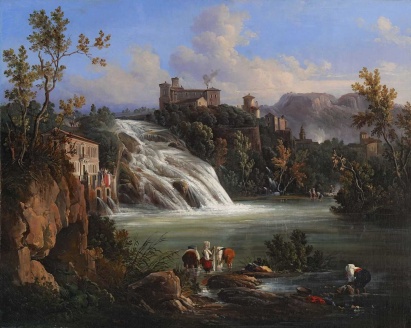 (Upper image), detail of map of Isola Liri. (Lower) Isola del Liri, Cascata del Valcatoio by Raffaele Carelli (1795-1864)
(Upper image), detail of map of Isola Liri. (Lower) Isola del Liri, Cascata del Valcatoio by Raffaele Carelli (1795-1864)
At Isola Liri there were born at least two of the 12 children Giacomo Boncompagni and his wife Costanza Sforza had together: Giulia (1686-1622) and Ugo (1587-1602). Giacomo Boncompagni and his wife turned the castle there into a luxurious palace, with exquisite frescoes and stuccos in the interior sale depicting variously biblical scenes, Boncompagni estates, and local notables (from nearby Arpino) Caius Marius and Cicero.
The castle at Isola Liri would remain in the family’s possession for more than 200 years, until 1796, when Antonio (II) Boncompagni Ludovisi, Prince of Piombino V and Duke of Sora and Arce VIII, sold it to Ferdinand I of the Two Sicilies (=Ferdinand IV of Naples). French troops slaughtered the entire population of the town (533 in all) on 12 May 1799.
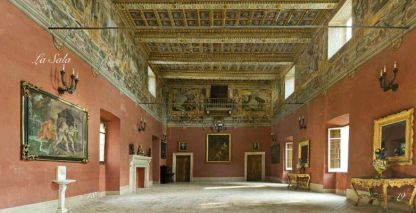 The castle at Isola Liri, known since 1924 as Castello Boncompagni Viscogliosi, has received an excellent 2010 illustrated treatment that can be viewed here.
The castle at Isola Liri, known since 1924 as Castello Boncompagni Viscogliosi, has received an excellent 2010 illustrated treatment that can be viewed here.
Giacomo’s membership on the “Secret Council” at Milan
Also new from the Villa Aurora archives, relevant to the period of Giacomo Boncompagni’s earlier public career: a dossier of letters from King Philip II of Spain and Don Sancho de Guevara y Padilla (who served as Spanish governor of Milan, 1580-1583) to Giacomo. They concern Giacomo Boncompagni’s appointment to and service on the ‘Secret Council’ of the Duchy of Milan.
Looking forward
Giacomo Boncompagni had strong cultural interests, and (among other things) was a friend and patron of the composers Giovanni Pierluigi da Palestrina and Vincenzo Ruffo, as well as of the important chess player and theoretician Giulio Cesare Polerio. Some fascinating philosophical and scientific materials attributed to Giacomo by an early Boncompagni Ludovisi archivist have surfaced at the Villa Aurora—including sketches apparently connected to his father Gregory XIII‘s calendar reform of 1572-1582, which Giacomo is known to have energetically supported. But those topics deserve their own blog posts!
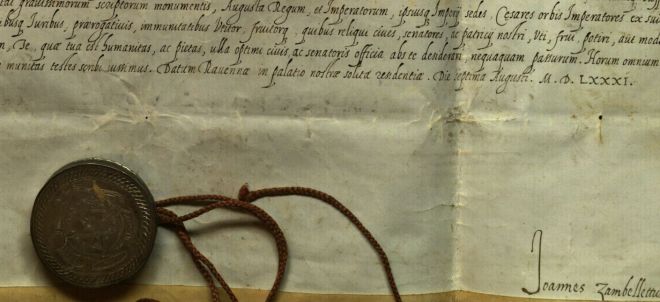
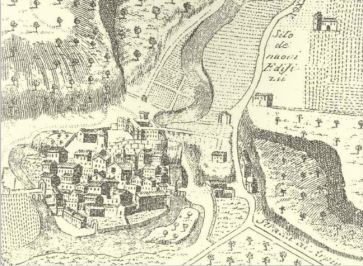

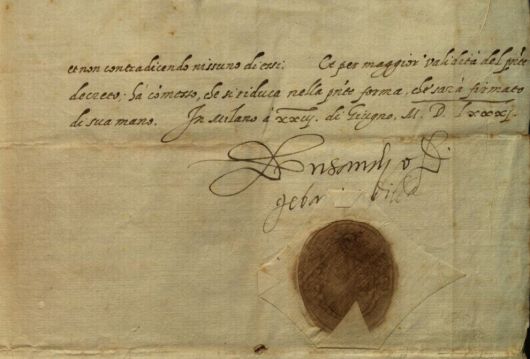
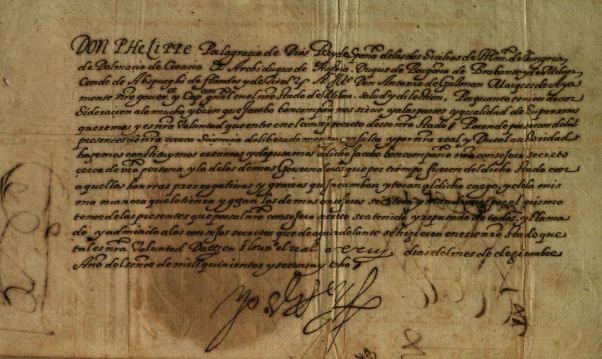
I wonder what the evidence is that Giacomo Boncompagni was friends with Vincenzo Ruffo.